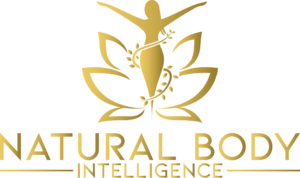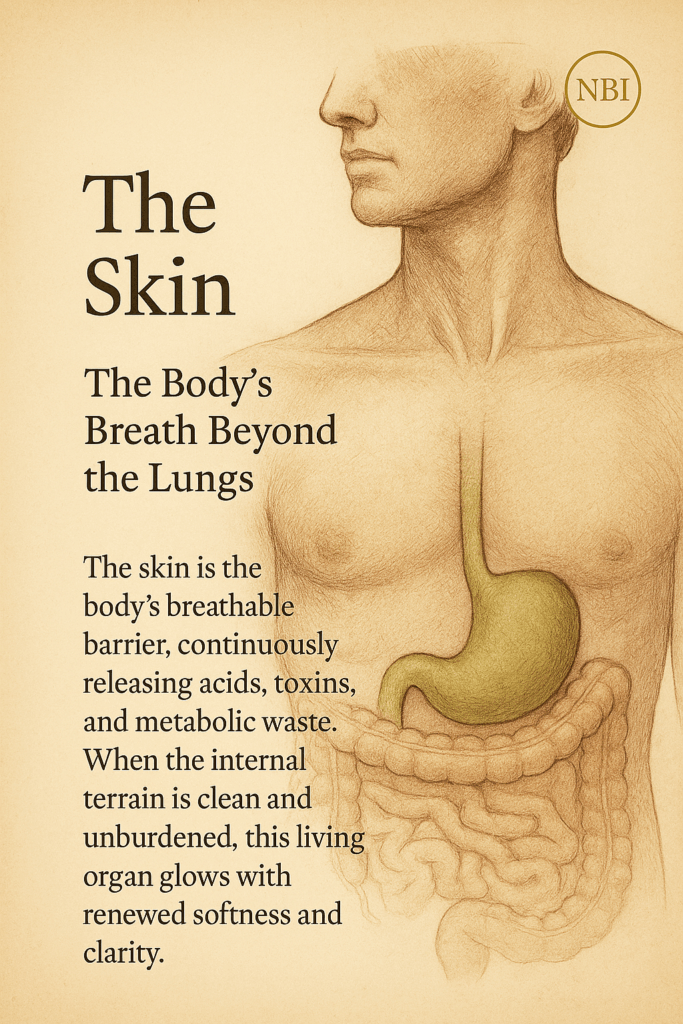The skin is far more than the surface we show to the world. It is the body’s largest organ of elimination, a living boundary between the inner terrain and the outer environment, constantly exchanging information, releasing waste, and responding to the conditions of our lives. In Natural Hygiene, the skin is often called the “third lung” and the “second kidney” because it breathes, it filters, and it helps maintain internal purity when the deeper organs are under strain.
Every moment, the skin is quietly releasing acids, toxins, metabolic by-products, and the remnants of foods that the internal pathways cannot process. This happens through sweat, through oils, and through the tiny invisible vapours that rise from the body even when we feel still. When the inner terrain is clean, the skin glows with softness and clarity. But when the bloodstream becomes overloaded, the skin steps in to assist, often expressing the internal burden through eruptions, rashes, dryness, itchiness, or inflammation.
Many people view these symptoms as surface-level problems, but the skin is not acting alone. It mirrors the state of the liver, the kidneys, the lymphatic system, and the colon. When these primary organs of elimination become overworked, the body wisely uses the skin as an additional pathway. Acne, eczema, psoriasis, dermatitis, hives, or simple dullness are not random conditions. They are signs that the body is communicating through its outermost layer.
The skin also reflects our relationship with hydration. A dehydrated terrain produces dryness, creasing, and a lack of vibrancy because the body conserves moisture for the organs that need it most. Water-rich fruits, clean water, rest, and natural living restore the fluidity that the skin depends on. In this way, the skin teaches us that beauty is not something applied from the outside but something created from inner purity and balance.
Emotionally, the skin holds stories too. It is sensitive to stress, adrenaline, fear, embarrassment, and internal conflict. A single emotional moment can change the temperature of the skin, alter its colour, or bring sudden heat or flushing. When emotions are repressed or unprocessed, the skin often becomes reactive, trying to release what the mind continues to hold. In this way, the skin acts as a bridge between the emotional and physical body, expressing what we cannot always speak.
Natural Hygiene reminds us that skin conditions are not enemies but attempts at healing. When we simplify the diet, remove stimulants, hydrate deeply, and allow the body to rest, the skin begins to transform. Fasting is especially powerful for the skin because it frees the organs to cleanse the bloodstream, reducing the burden that would otherwise be pushed outward. Sunshine, fresh air, gentle movement, and dry or wet skin-brushing can also support natural circulation.
As the inner world clears, the skin becomes a reflection of that internal renewal. It brightens, softens, and becomes more alive. People often describe an inner glow, as though something beneath the surface has awakened. This glow is the signature of a clean terrain — one where the body no longer needs to push waste outward because the internal systems are flowing freely.
The skin invites us to pay attention. When it speaks through irritation or redness, it asks for simplicity. When it breaks out, it asks for rest. When it becomes inflamed, it asks for calm. And when it glows, it reminds us that the body thrives when we align with nature’s rhythm.
The skin is not just a covering; it is a communicator. It breathes, it senses, it protects, and it reveals. And when we learn to listen to it, the entire body benefits.


